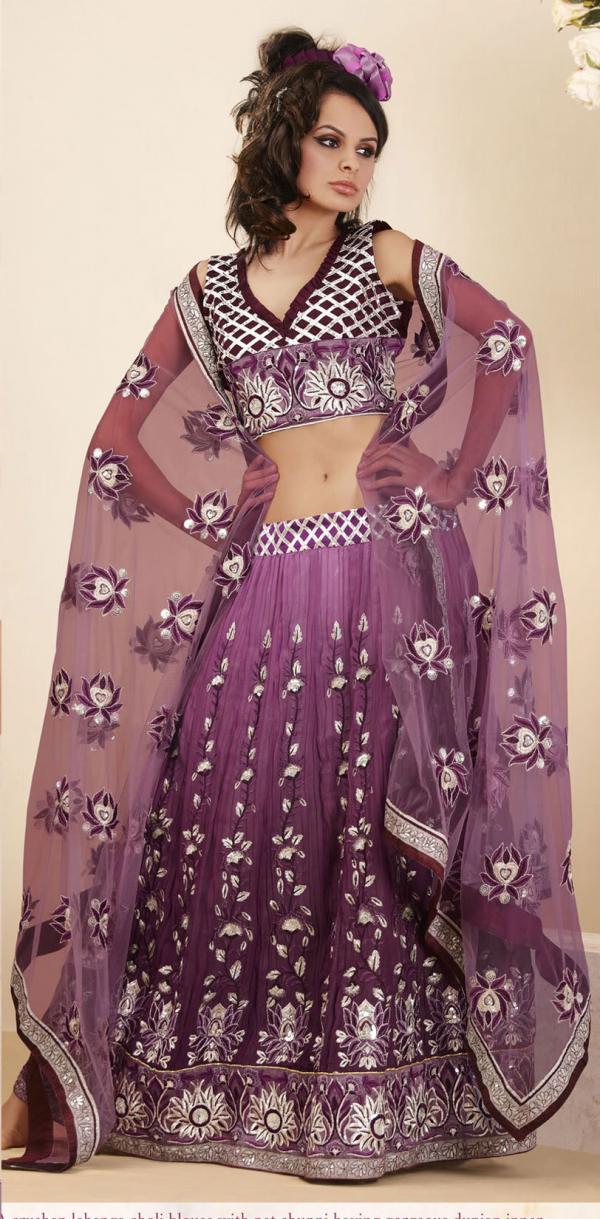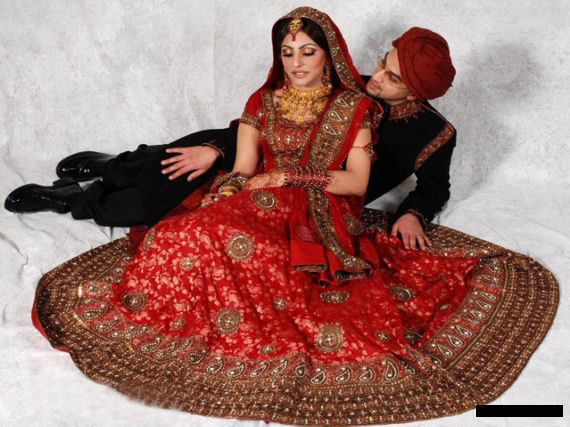Designs Of Lehenga Definition
Source(Google.com.pk)In Paaka Katha (final talk), the parents of the bride/groom, along with one or two very close relatives/friends go to the other party's house to formally settle the marriage. It may be followed by a dinner/ lunch.
A ceremony called Aashirwad (a substitute for Roka) in which the bride's parents, close relatives and may be family friends go over to the groom's house and give him their aashirwad, may be along with a token gift. The same is done by the groom's family, they go to the girl's house and bestow her with their blessings. Usually, the girl is given some gold ornament on this occasion by the boy's parents. Notably, the groom / bride do not accompany the family on these occasions. Aashirwad is as good as an engagement. There is no formal engagement ceremony among Hindu Bengalis.
On the day of the wedding (or within a week before wedding), the groom's and the bride's father offer prayers to the ancestors. A pundit is called and a pooja takes place in their respective houses. This is called Vriddhi.
Before sunrise on the day of the wedding Dadhi Mangal is performed. The bride and the groom, in their respective homes, wear fresh clothes and are offered milk based products (curd, milk, meetha etc) to eat. This is done because the whole day, till the wedding ceremony is over, both of them are in vrata and don't eat anything. This is preceded by a happily married couple fetching water (ideally from a well) in a matka.
Shubha Drishti and Mala badal takes place when the groom comes. The girl's mother receives him at the gate with an aarti. This is called Varan. At the muhurat, the boy and the girl set eyes on each other for the first time, that is why it is called shubh drishti. Then the exchange of garlands takes place (mala badal).
Vivah, the actual wedding ceremony, happens at a chosen muhurat. Kanyadan is called Sampradaan unlike other Hindu marriages it is not done by the father, instead it is done by some one in the family (with same gotra) like paternal uncle etc. Then Saat Pheras take place around the agni (sacred fire) to the chant of Sanskrit mantras.
The baraatis, except the groom and one or two of his cousins or friends, go home. The next morning the girl's parting is filled with Sindoor by the groom (again) and a sumptuous lunch follows where the bride and the groom sit with each other and are served a huge feast in new utensils. This is called Baasi Byah.
The couple is then blessed by all the elders in the family and the groom is given gifts. Then the Bidai takes place at the right muhurat, usually before sun set, when people from the groom's house come and fetch the couple.
Next day afternoon, the groom's family and friends are invited for lunch . The close relatives of the bride are also invited. In this the bride is formally invited into the family. The groom pledges responsibility of her food and clothing and as a sign of fulfilling that pledge, gifts her a new sari and serves her food.
Designs Of Lehenga Image Photo Pictures 2013

Designs Of Lehenga Image Photo Pictures 2013

Designs Of Lehenga Image Photo Pictures 2013

Designs Of Lehenga Image Photo Pictures 2013

Designs Of Lehenga Image Photo Pictures 2013

Designs Of Lehenga Image Photo Pictures 2013

Designs Of Lehenga Image Photo Pictures 2013

Designs Of Lehenga Image Photo Pictures 2013

Designs Of Lehenga Image Photo Pictures 2013

Designs Of Lehenga Image Photo Pictures 2013

Designs Of Lehenga Image Photo Pictures 2013
No comments:
Post a Comment